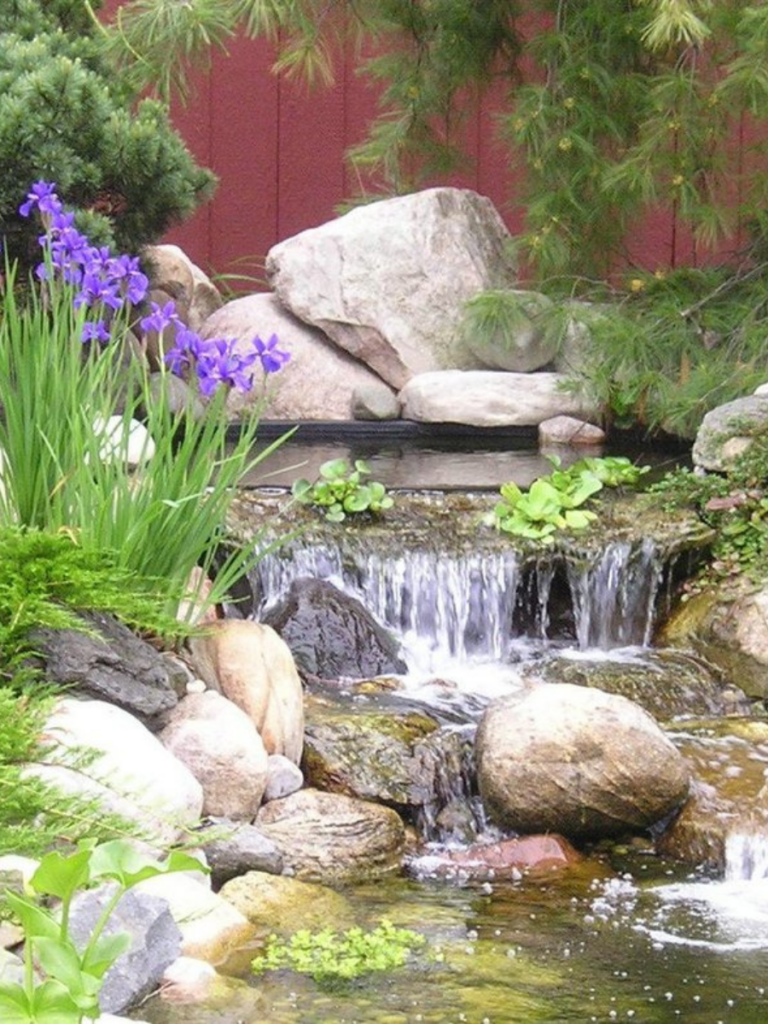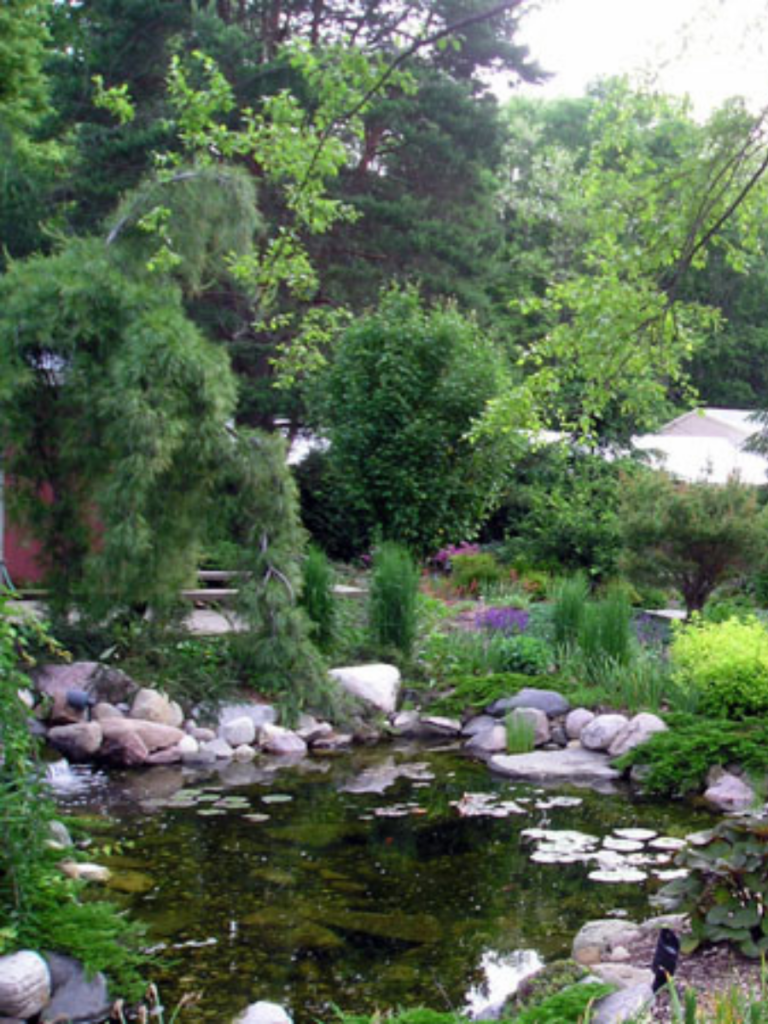Landscape water features, big or small, complex, or simple, have the wonderful ability to infuse your outdoor environment with a certain kind of music to the ears. The sound of water flowing over rocks or splashing into a pond is soothing and very inviting.
While water features such as fountains, waterfalls, and ponds bring that extra element of sensory pleasure to your outdoor area experience, they come with an additional layer of expertise from your landscape maintenance provider.
Routine cleaning and inspection by a knowledge landscape technician is highly recommended to ensure proper functioning of your filtration and pumping equipment. Especially if your selected water feature is a Koi Pond, that expert care can be critical to the longevity and health of your pond fish.
Water Feature Maintenance
Fundamental water feature maintenance means keeping the water clear, clean, and free of organic debris. Also, keep an eye on water levels as they should be monitored due to water evaporating or splashing out. You can keep your water levels just right by manually filling or installing an autofill device.
Out of all of the types of landscaping water features, ponds-especially Koi Ponds- demand the most attention, love, and expertise from a maintenance standpoint.
Pond Maintenance
Pond maintenance can be labor intensive but starting out with the right equipment will significantly reduce the amount of time required to keep your pond in pristine condition.
For a pond to run efficiently, the pumping, circulation, and filtration system must be adequately sized for the water volume. If the systems size is not correct, it will have to work too hard and may need to be replaced prematurely.
*This applies to both simple garden ponds and Koi ponds

Garden Ponds
If your idea is to grow aquatic plants in your backyard pond, you will need to built it in a sunny spot since the plants will need at least five hours of sunlight per day to flourish. Also, aquatic plants do best in still water. If you want to include a waterfall in your pond design, you will need to position those aquatic plants far enough away so they will not be subjected to the ripples. This is important for those floating plats such as lotuses and water lilies.
It is also important to mention that plants do not do well when fish are around- because they eat them! If you wish to combine fish and aquatic plants, you must separate the plants by putting them in containers. You can incorporate a floating island for plants to keep them in the pond but far enough way from the fish.
Koi Fish Ponds
The difference between Koi Ponds and a simple garden pond is due to the design and construction.
Depth and Size: To have healthy fish and safe from predators, a Koi Pond should be at least three feet deep and contain a minimum of 1,000 gallons of water
Filtration: A Koi Pond has two types of filtration systems: one extracts waste produced by the fish and other debris; the other houses beneficial bacteria that converts toxins into harmless substances.
Aeration: Depending on how big your pond is and how many fish you’d like to include, you may need an aeration device to circulate oxygen through the pond water. Sometimes, by adding a waterfall into the design will fill the need for aeration.
Lastly, the pond water needs to be treated because of the chlorine and other chemical additives present in the tap city water can kill your fish.

Maintaining Garden Waterfalls and Fountains
Compared to other landscape water features such as waterfalls and ponds, landscape fountains are known to be less labor-intensive to construct and maintain. They can require less space since there are many sizes and styles to choose from. Fountains offer an easy way to bring the pleasing sensory effects of moving water into your outdoor space.
Fountains have filters or skimmers that must be cleaned out to make sure the water flow isn’t being compromised by an accumulation of debris. Periodically, you will need to replace or repair water pipes and pumps.
Whichever landscape water feature idea you decide on for your outdoor environment it will require attention on a weekly basis. If you fall behind on this maintenance, you can burn out your pumping system quickly. It is best practice to have a proactive approach with regular inspections by a knowledge professional.
